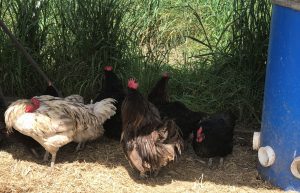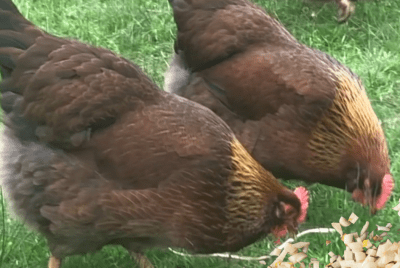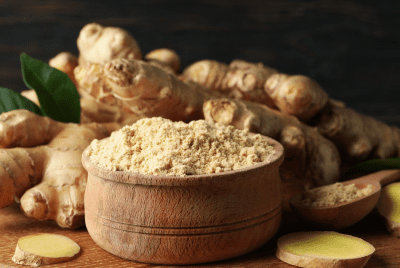How Long Do Chickens Live?
1. Introduction: How Long Do Chickens Live?
As someone who’s been fascinated by chickens and their quirky personalities for years, I’ve often been asked, “How long do chickens live?” It’s a simple question with a complex answer, influenced by various factors. In this guide, I’ll share insights into the lifespan of chickens, how to care for them, and how you can help them live a longer, healthier life.
2. Understanding Chickens’ Lifespan
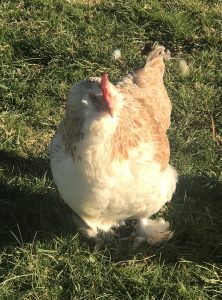
2.1. Factors affecting lifespan
In “Understanding Chickens’ Lifespan,” various factors influencing their longevity are explored. Key elements include breed, which inherently determines average lifespan; living conditions, where a safe and stimulating environment can extend life; diet and nutrition, as balanced feeding promotes health; and healthcare, where regular check-ups and disease prevention are crucial. These factors collectively impact a chicken’s life, ranging from an average of 5 to 10 years, highlighting the importance of comprehensive care in maximizing their lifespan and overall well-being.
2.2. Average lifespan statistics
In the section “Understanding Chickens’ Lifespan,” the focus is on average lifespan statistics of chickens, a topic crucial for both seasoned poultry farmers and novice chicken enthusiasts. Generally, chickens live between 5 to 10 years, but this varies based on several factors. For instance, commercial breeds like Leghorns, raised primarily for egg production, often have shorter lifespans of around 5-6 years. On the other hand, heritage breeds like Plymouth Rocks can live up to 8-10 years under optimal conditions.
Bantam breeds, known for their smaller size, typically enjoy longer lifespans, sometimes exceeding 10 years. However, the longest-lived chickens are often pets who receive exceptional care, including a balanced diet, adequate healthcare, and a safe living environment.
It’s important to note that these statistics are averages. Individual chickens may live shorter or longer based on their genetics, diet, environment, and the quality of care they receive. For example, a chicken in a well-maintained backyard coop with ample space, a nutritious diet, and regular veterinary care might live longer than its average breed lifespan.
Furthermore, factors like exposure to predators, climate conditions, and breed-specific health issues also play a significant role. Some breeds are predisposed to certain genetic conditions that can affect their overall lifespan.
In conclusion, while breed is a significant indicator of a chicken’s potential lifespan, the care and environment provided by the chicken keeper are equally crucial in determining how long their feathered companions will thrive. Therefore, understanding these average lifespan statistics is just the starting point for ensuring a healthy, long life for chickens.
3. Breed Variations in Lifespan
3.1. Common breeds and their lifespans
In the fascinating world of poultry, the lifespan of chickens varies significantly across breeds. Understanding the average lifespans of common chicken breeds is crucial for potential and current chicken keepers. Here’s a glimpse into the life expectancy of some popular breeds:
a. Rhode Island Red:
Renowned for their hardiness and egg-laying capabilities, Rhode Island Reds typically live for about 6 to 8 years. They are a favorite among backyard flock owners due to their adaptability and friendly nature.
b. Leghorns:
Famous for their prolific egg production, Leghorns have a shorter lifespan, averaging around 4 to 6 years. Their active and energetic personality makes them a popular choice for egg farms.

c. Silkie:
Adored for their unique fluffy plumage and calm temperament, Silkies can live up to 7 to 9 years. They are often kept as pets and are known for their nurturing instincts.
d. Plymouth Rock:
These dual-purpose birds, used for both eggs and meat, have a lifespan of around 6 to 8 years. They are robust and friendly, making them a popular breed for novice chicken keepers.
e. Orpington:
Known for their large size and gentle nature, Orpingtons typically live between 8 to 10 years. They are excellent layers and good for meat production, making them a versatile breed for any flock.
f. Bantams:
Smaller in size, Bantam breeds generally enjoy longer lifespans, often exceeding 10 years, especially when kept as pets and given attentive care.
While these are average figures, a chicken’s lifespan can be influenced by factors like diet, environment, and healthcare. Heritage breeds tend to live longer due to their genetic diversity and hardiness. Ultimately, providing a safe habitat, proper nutrition, and regular healthcare will help maximize the lifespan of these feathered companions.
g. Rare or unique breeds
The world of poultry is not just limited to common breeds; it also includes an array of rare and unique chicken breeds, each with its own distinctive lifespan characteristics. For instance, the Ayam Cemani, a striking all-black breed from Indonesia, is known for its rarity and unique appearance. These birds typically have a lifespan of around 6 to 8 years. Another rare breed, the Crevecoeur, one of the oldest French chicken breeds, is noted for its distinctive V-comb and can live up to 8 years under good care.
The Sebright, a true bantam breed admired for its laced plumage, often enjoys a lifespan of about 5 to 7 years. On the larger side, the majestic Brahma, known for its size and gentle nature, can live as long as 8 to 10 years, which is impressive for its size.
These rare breeds often require specialized care due to their unique characteristics, and their lifespans can be significantly impacted by the quality of their environment and care. Their rarity often makes them more prone to genetic issues, underscoring the need for responsible breeding practices and attentive care to ensure their health and longevity.
4. Optimal Living Conditions for Longevity
4.1. Housing and environment
Optimal housing and environment are pivotal for the longevity of chickens, greatly influencing their health and lifespan. A well-designed coop is essential, providing protection from predators, harsh weather, and extreme temperatures. It should be spacious enough to prevent overcrowding, allowing each chicken ample space to roost, nest, and roam. Ventilation is crucial to prevent respiratory issues, yet the coop must be free from drafts to avoid cold stress.
Access to a secure outdoor area is equally important. Chickens benefit from natural sunlight and the opportunity to forage, which promotes physical health and mental well-being. The outdoor space should offer protection from predators and be equipped with shaded areas to prevent overheating in summer.
Cleanliness is another key factor. Regular cleaning of the coop and outdoor area reduces the risk of disease and parasite infestation. Providing a dust bath area helps chickens maintain feather health, which is integral to their overall well-being.
By ensuring these housing and environmental conditions, chicken keepers can significantly enhance the quality of life and longevity of their birds, promoting a healthy, stress-free life that can extend their lifespan.
4.2. Diet and Nutrition
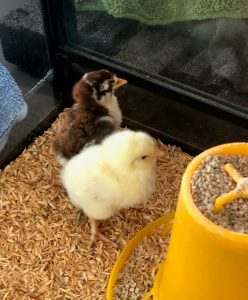
Diet and nutrition play a crucial role in the optimal living conditions for chickens, directly impacting their health and longevity. A balanced diet is essential for maintaining a chicken’s health and well-being. The foundation of a chicken’s diet should be a high-quality commercial poultry feed, which is formulated to provide all the necessary nutrients, including proteins, carbohydrates, vitamins, and minerals.
In addition to commercial feed, chickens benefit from access to fresh greens, fruits, and vegetables, which provide essential vitamins and enhance their immune system. Leafy greens, like lettuce and kale, are excellent choices, along with occasional treats like apples or carrots. However, it’s important to avoid toxic foods like onions, garlic, and raw beans.
Calcium is vital for laying hens to ensure strong eggshells. Offering crushed oyster shells as a supplement can help meet their calcium needs. Clean, fresh water must be available at all times, as dehydration can quickly lead to health issues.
Overall, a diverse and nutritious diet, tailored to the specific needs of the breed and life stage, is key to prolonging a chicken’s life and ensuring its vitality. Proper nutrition not only supports physical health but also contributes to the birds’ overall happiness and quality of life.
4.3 Homemade Chicken Feed Recipe
Ingredients:
Whole grains (e.g., wheat, barley, oats) – 40%
Corn (cracked or whole) – 30%
Peas or legumes (for protein, e.g., lentils, field peas) – 10%
Fish meal or meat meal (for protein) – 5%
Flaxseed or sunflower seeds (for Omega-3 and fats) – 5%
Calcium source (e.g., crushed oyster shells) – 5%
Grit (like small gravel, aids in digestion) – 3%
Vitamin and mineral poultry supplement – 2%
Instructions:
Mixing: Combine all ingredients in a large container. Ensure a thorough mix so the chickens get a bit of everything in their feed.
Storage: Store the mix in a cool, dry place in a sealed container to keep it fresh and protect it from rodents.
Feeding: Offer this feed mix as part of their daily diet. Since they are free-ranging, they will also get nutrients from insects, greens, and other natural sources they find.
Water: Always provide plenty of fresh water, as hydration is crucial for their health.
Observation: Keep an eye on their health and egg production. If you notice any issues, you may need to adjust their diet.
Remember, while free-ranging provides them with a diverse diet, this homemade feed ensures they get a balanced intake of essential nutrients. It’s always good to consult with a vet or a poultry nutritionist to tailor the diet to your chickens’ specific needs, especially if they have special requirements or health concerns.
5. Healthcare for Chickens
5.1. Common health issues
Chickens, like any other animals, are susceptible to various health issues, some of which are more common than others. Understanding these common ailments is essential for chicken keepers to ensure the well-being of their flock.
One of the most frequent health problems in chickens is respiratory infections, such as chronic respiratory disease and infectious bronchitis. These can be caused by bacteria, viruses, or fungi and often manifest as sneezing, coughing, and breathing difficulties. Good ventilation and hygiene in the coop are crucial for prevention.
Parasites, both internal like worms and external like mites and lice, are another common issue. They can cause irritation, feather loss, and overall distress in chickens. Regular deworming and coop cleaning are effective preventive measures.
Fowl pox is a viral disease, characterized by lesions on the skin and around the beak and eyes. While generally not fatal, it can cause discomfort and lead to secondary infections. Vaccination is available for fowl pox.
Egg-laying problems such as egg binding, where an egg gets stuck in the oviduct, and vent prolapse, can also occur, particularly in high-production breeds. Adequate nutrition and calcium can help reduce these risks.
Lastly, nutritional deficiencies, often due to an unbalanced diet, can lead to various health issues, including weak bones and poor feather quality. Ensuring a balanced diet tailored to the chickens’ age and production status is vital.
Regular observation, proper nutrition, and maintaining a clean, stress-free environment are key to preventing and managing these common health issues in chickens. Early detection and appropriate veterinary care can greatly improve outcomes when health issues do arise.
5.2. Preventative care and treatment
Preventive care and timely treatment are vital in managing common health issues in chickens, ensuring the longevity and well-being of the flock. The cornerstone of preventive care is maintaining a clean and hygienic environment. Regularly cleaning and disinfecting the coop, providing fresh bedding, and ensuring adequate ventilation can significantly reduce the risk of respiratory infections and parasitic infestations.

A balanced diet tailored to the chickens’ age and production stage is crucial. It should include a mix of quality commercial feed, grains, and access to greens, which helps prevent nutritional deficiencies. Supplements like calcium and grit are important for laying hens to maintain strong eggshells and healthy digestion.
Regular health checks are important for early detection of issues. Observing behavior, appetite, egg production, and physical appearance can help identify problems early on. Vaccinations for diseases like fowl pox and Marek’s disease are recommended where these diseases are common.
Coccidiosis is the silent chicken killer. Give coccidiostat (medicine that contains Amprolium) as soon as you spot it and you can usually save your chicken. This means having the medicine ready in your chicken medicine cabinet.
For treatment, promptly isolating sick birds is crucial to prevent the spread of disease. Consulting with a veterinarian for the appropriate medication or treatment plan is essential, especially for bacterial or viral infections. For parasitic problems like mites or lice, specific treatments such as dusting powders or sprays are effective.
Providing access to clean water, shade, and protection from extreme weather also plays a significant role in preventing stress-related issues. Overall, a combination of good husbandry practices, balanced nutrition, and vigilant health monitoring forms the basis of effective preventive care and treatment for common health issues in chickens.
6. The Role of Genetics in Lifespan
6.1. Hereditary factors
Genetics play a pivotal role in determining the lifespan of chickens, acting as a blueprint for their health and longevity. Hereditary factors influence vital traits like resistance to diseases, overall hardiness, and productive lifespan, especially in egg-laying. Certain breeds, due to their genetic makeup, are inherently predisposed to longer lives. For example, heritage breeds often exhibit greater longevity compared to commercial breeds, which are selectively bred for high productivity but may have shorter lifespans. Understanding these genetic predispositions is crucial for breeders aiming to enhance the health and lifespan of chickens, focusing on breeding programs that prioritize not just productivity but also longevity and robustness.
6.2. Breeding for longevity
Breeding for longevity in chickens involves selecting traits that enhance their lifespan while maintaining overall health and productivity. This approach focuses on genetic qualities like disease resistance, robustness, and adaptability to various environments. Breeders prioritize heritage and traditional breeds known for their longer lifespans, and avoid inbreeding to maintain genetic diversity, which is crucial for the vitality of the flock. The goal is to produce chickens that not only live longer but also have better life quality, with fewer health issues over their lifespan. This sustainable breeding practice contributes to the welfare of the birds and is increasingly valued in both backyard and commercial poultry keeping.
7. Impact of Lifestyle on Lifespan
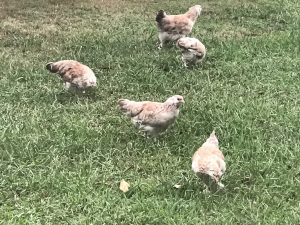
7.1. Free-range vs. caged living
The debate between free-range and caged living for chickens centers around animal welfare, health, and productivity. Free-range chickens, allowed to roam, forage, and engage in natural behaviors, generally exhibit better physical and mental health. This lifestyle often leads to stronger immune systems, less stress, and lower susceptibility to diseases, contributing to a potentially longer lifespan. Conversely, caged living, common in industrial egg production, restricts movement and natural behaviors, which can lead to higher stress levels, physical ailments, and a reduced quality of life. The free-range approach aligns more with animal welfare standards, offering chickens a more natural and healthier living environment.
7.2. Social interaction and stress
Chickens are inherently social creatures, and their interactions within a flock play a significant role in their overall well-being. Social interaction is crucial for chickens, as it stimulates natural behaviors such as foraging, pecking, and roosting together. These interactions contribute to a harmonious social hierarchy, essential for minimizing stress and aggression. Lack of socialization or overcrowded conditions can lead to increased stress levels, resulting in behavioral issues like feather pecking and cannibalism. Stress in chickens not only affects their mental health but can also lead to physical problems, including reduced immunity, lower egg production, and susceptibility to illness. Providing an environment that facilitates natural social behaviors, along with adequate space, is key to maintaining a healthy, stress-free flock. Regular monitoring of the flock dynamics is essential to identify and address any signs of stress or aggression early, ensuring a peaceful and healthy living condition for the chickens.
8. End of Life Care for Chickens
8.1. Recognizing old age
Recognizing old age in chickens is crucial for providing appropriate end-of-life care, ensuring their comfort and well-being in their twilight years. As chickens age, they exhibit several noticeable changes. Physical signs include graying or loss of feathers, decreased activity levels, and a decline in egg production. Older chickens may also show signs of arthritis, evident in their slower movements and difficulty perching.
Behavioral changes are also common. Elderly chickens often spend more time resting and less time foraging or engaging in social activities. They may isolate themselves or be less dominant in the pecking order.
In providing care for aging chickens, it’s important to make adjustments to their living environment. This might include easier access to food and water, softer bedding, and lower perches to accommodate their reduced mobility. Monitoring their health closely for any signs of illness or discomfort is essential, as older chickens are more susceptible to health issues.
Understanding and responding to these signs of aging ensures that chickens live out their final days in comfort and dignity. Caregivers should focus on maintaining a quality of life that is as stress-free and comfortable as possible for these valued members of the flock.
8.2. Comfort and care in later years
Providing comfort and care for chickens in their later years is essential for their well-being. As chickens age, their needs change, requiring more attention to their comfort. Soft, easily accessible bedding helps alleviate joint pain, while lower perches prevent strain from climbing. Adjusting their diet to suit older chickens, possibly with added supplements, supports their nutritional needs as their metabolism slows. Ensuring easy access to food and water is crucial, as older chickens may move slower. Providing a calm, stress-free environment, perhaps separated from younger, more active birds, helps maintain their quality of life. Regular health checks are important to monitor for age-related issues, ensuring their twilight years are comfortable and dignified.
9. Myths and Misconceptions About Chicken Lifespan
9.1. Debunking common myths
Common myths about chicken lifespans often lead to misconceptions. One prevalent myth is that chickens only live for a few years. In reality, with proper care, chickens can live between 5 to 10 years, and sometimes longer. Another myth suggests that chickens are always productive until the end of their lives. While their most productive period for laying eggs is in the first few years, their egg production gradually declines as they age, but they can still be healthy and active. Additionally, the belief that all chicken breeds have similar lifespans is misleading. Lifespans vary significantly across breeds, influenced by genetic factors and living conditions. Debunking these myths is crucial for understanding and meeting the needs of these birds throughout their lives.
9.2. Surprising facts
Chickens, often perceived merely as egg-layers, have surprising aspects to their lifespans and utility that extend beyond their prime laying years. While it’s commonly known that chickens live for 5 to 10 years, what’s less recognized is their continued contribution to homesteads and gardens even after their egg production wanes.
One fascinating fact is that chickens can be incredibly hardworking livestock throughout their lives. Even as they age and stop laying eggs, they remain active foragers. They are excellent at turning over compost heaps, a process that not only helps them find food but also aids in composting. Their natural behavior of scratching and pecking at the ground makes them efficient at aerating soil and controlling pests like slugs and insects.
Moreover, chickens can play a significant role in fertilizing the land. Their droppings are rich in nitrogen, an essential nutrient for plant growth, making them valuable contributors to the health of garden soil.
Allowing chickens to enjoy their “retirement” is a way of honoring their years of service. These older birds often become beloved pets, offering companionship and continuing to play a part in the ecosystem of a backyard or farm. This respectful approach not only enriches the lives of the chickens but also allows owners to appreciate the full spectrum of benefits these remarkable birds offer throughout their entire lives.
10. How Long Do C hickens Live: Comparing Domestic vs. Wild Chickens
10.1. Lifespan differences
When comparing the lifespans of domestic and wild chickens, notable differences emerge, primarily due to varying living conditions and evolutionary adaptations. Wild chickens, like the Red Junglefowl from which domestic breeds originated, typically have shorter lifespans, averaging 3 to 4 years in the wild. This reduced lifespan is largely due to factors like predation, disease, and food scarcity. In contrast, domestic chickens, provided with shelter, regular feed, and healthcare, often live longer, with an average lifespan of 5 to 10 years. The controlled environment of domestication shields them from many natural hazards, significantly extending their life expectancy compared to their wild counterparts.
10.2. Adaptations in the wild
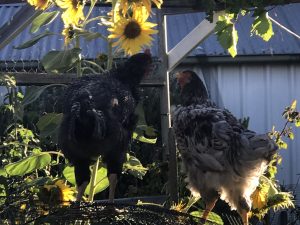
Wild chickens, primarily the Red Junglefowl from which modern domestic breeds descend, exhibit remarkable adaptations that enable them to survive in their natural habitats. One key adaptation is their camouflage plumage. The coloration and pattern of their feathers blend seamlessly with the forest floor, providing protection from predators. They also have a well-developed flight response; although they cannot fly long distances, they can quickly ascend to trees to escape danger.
Their foraging behavior is another crucial adaptation. Wild chickens are omnivorous and adept at scratching and pecking at the ground to uncover insects, seeds, and fruits, making them effective at finding diverse food sources in various environments.
Social structure is also a significant adaptation. These birds live in small flocks with a complex social hierarchy, which helps in resource allocation and predator vigilance. The roosters play a protective role, alerting the flock to potential threats with distinct vocalizations.
These adaptations enable wild chickens to effectively navigate and survive in their environments, showcasing their resilience and the evolutionary traits that have been passed down to their domesticated counterparts.
11. How Long Do C hickens Live: Record Holding Chickens and Exceptional Cases
11.1. Longest-lived chickens
The record for the longest-lived chickens is quite astonishing, showcasing the potential for longevity under optimal care conditions. The Guinness World Record for the oldest chicken is held by a hen named Matilda, who lived an impressive 16 years, defying the average lifespan of 5 to 10 years for most chickens. Matilda, a Red Pyle chicken, never laid eggs, which may have contributed to her unusually long life. Her longevity was attributed to a combination of genetic factors, a stress-free environment, and meticulous care by her owners. Matilda’s story is an exceptional example of how far the lifespan of a chicken can extend under ideal circumstances, making her a remarkable figure in the world of poultry.
11.2. The Story of Matilda – The world’s longest living chicken
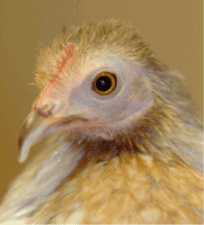
Matilda, the remarkable chicken known for her record-breaking longevity, became a celebrated figure in the world of poultry. Hatched in 1990, she was a Red Pyle breed of chicken, a type of Old English Game hen. Matilda’s story is unique not only because of her age but also due to her lifestyle and the care she received from her owners, Keith and Donna Bartons.
The Bartons, who were magicians, adopted Matilda as part of their magic act. Unlike most chickens, Matilda spent her life indoors, which likely protected her from predators and diseases common in outdoor environments. Interestingly, Matilda never laid eggs. This rare condition, which sometimes occurs in hens, is believed to have contributed significantly to her extended lifespan, as egg production can be physically taxing and lead to various health issues over time.
Matilda lived a pampered life, receiving constant care and attention from the Bartons. She became a beloved pet, living freely in their home in Bessemer, Alabama. Her diet and living conditions were meticulously managed, ensuring she had a stress-free and comfortable life.
In 2004, Matilda was officially recognized by the Guinness World Records as the “World’s Oldest Living Chicken.” She lived until February 2006, reaching the extraordinary age of 16 years. Her story, unique and endearing, highlights the potential longevity of chickens when provided with exceptional care and a safe living environment. Matilda’s legacy continues to fascinate and inspire poultry enthusiasts around the world.
11.3. Unusual Lifespan stories
In the world of poultry, there are several unusual chicken lifespan stories that defy the norm. For instance, a hen named Muffy lived to an astonishing 22 years, far exceeding the average chicken lifespan, thanks to dedicated care and a predator-free environment. Another unique case is a chicken named Bluey, who reached 14 years of age by living a stress-free life as a beloved family pet in Australia. These stories are exceptional and highlight the impact of factors like genetics, environment, and quality of care on a chicken’s life. While not typical, they showcase the potential for chickens to live significantly longer than expected under the right circumstances.
11.4. Muffy’s Story
Muffy’s story is a remarkable one in the world of chickens, known for her exceptionally long life. While specific details about Muffy are limited, her extraordinary lifespan of 22 years sets her apart from the average chicken, who typically lives between 5 to 10 years.
What made Muffy’s story unique was the combination of factors contributing to her longevity. First and foremost, she received dedicated care from her owners, who ensured that her living environment was safe, comfortable, and free from common threats like predators and harsh weather conditions. This level of care is crucial, as it significantly reduces stress and health risks, two factors that greatly impact a chicken’s lifespan.
Muffy’s diet also played a role in her longevity. A balanced and nutritious diet, tailored to her age and health needs, would have contributed to her overall well-being and vitality. Furthermore, Muffy’s genetic makeup might have predisposed her to a longer life, suggesting that her breed or lineage had characteristics conducive to longevity.
While Muffy’s case is extraordinary and not representative of the typical chicken, it underscores the potential for chickens to live well beyond their expected lifespan when provided with optimal care, a stress-free environment, and a diet that meets their nutritional needs. Her story is a testament to the impact of compassionate and attentive animal care.
12. How Long Do Chickens Live and The Emotional Aspect of Raising Chickens
12.1. Attachment and Loss
Raising chickens often leads to a deep emotional attachment, which can be as profound as with any other pet. Chicken keepers frequently develop strong bonds with their flock, appreciating their unique personalities, behaviors, and the daily rhythm they bring to life. The joy of watching them forage, hearing their clucks, and even the routine of feeding and caring for them creates a connection that enriches the human experience.
However, this attachment also means facing the inevitable reality of loss. As chickens age or fall ill, their keepers must confront the grief that accompanies their passing. This aspect of chicken keeping is often overlooked, but it is a significant emotional journey. Dealing with the loss of a chicken can be challenging, especially when they have been part of the family for years.
The cycle of attachment and loss in raising chickens teaches invaluable lessons about the fragility of life and the importance of care and compassion. It’s a bittersweet journey that many chicken enthusiasts navigate, finding comfort in the community of fellow poultry keepers and the shared understanding of this unique emotional bond. In essence, the emotional aspect of raising chickens highlights the depth of human-animal relationships and the impact these feathered friends have on our lives.
12.2. The joy of chicken keeping

The joy of chicken keeping is a unique and enchanting experience, casting a magic spell on those who delve into this fulfilling endeavor. Chickens, with their diverse personalities, quirky behaviors, and the simple pleasure they find in their daily activities, bring a sense of wonder and delight to their keepers. Watching them scratch the earth, chase after insects, or bask in the sun is not only entertaining but also incredibly grounding, reminding us of the simple joys of life.
The rhythm of caring for chickens, from the morning ritual of releasing them to forage to the evening routine of securing them in their coop, creates a comforting daily structure. Their enthusiastic greetings, curious pecks, and contented clucking form a soothing backdrop to the day. The reward of fresh eggs is a tangible symbol of the reciprocal relationship between chickens and their keepers.
This connection to the natural world, the sense of stewardship, and the companionship chickens offer weave an enchanting spell. They teach us about responsibility, the cycles of life, and the joy found in life’s simple moments. Chicken keeping is more than a hobby; it’s a journey filled with wonder, learning, and a special kind of magic that only these feathered friends can bring.
Deep attachments that form between chickens and their owners
The deep attachments that form between chickens and their owners are often surprising and profound, transcending the conventional view of chickens as mere livestock. For many owners, chickens become beloved pets, each with its own distinct personality and charm. This bond is nurtured through daily interactions, care, and observation, leading to a surprisingly strong emotional connection.
Owners learn to recognize individual chickens by their unique behaviors, vocalizations, and even their body language. Feeding time, egg collection, and watching them roam and forage become cherished moments, fostering a sense of closeness. Particularly sociable chickens may follow their owners around, respond to their call, or enjoy being petted, strengthening this bond further.
Moreover, the responsibility of caring for their health and well-being creates a deeper level of attachment. Owners invest time and effort in providing the best possible environment, nutrition, and care, which is often reciprocated by the chickens through their companionship and trust.
These attachments can be as strong as those with more traditional pets like cats or dogs. The loss of a chicken can, therefore, be a deeply felt experience, accompanied by genuine grief and mourning. This emotional depth underscores the capacity of chickens to be not just productive farm animals but also sources of joy, companionship, and meaningful connection.
12.3. Local clubs and societies
Local clubs and societies dedicated to poultry keeping, both online and offline, provide invaluable resources and a sense of community for chicken enthusiasts. Offline, local poultry clubs often organize meetings, workshops, and shows where members can share experiences, learn from experts, and showcase their birds. These clubs also offer a platform for exchanging tips on care, breeding, and health management. Online, forums and social media groups connect chicken keepers globally, allowing for the sharing of advice, stories, and support across diverse geographical locations. Both platforms offer a space for novices and experts alike to deepen their knowledge, find camaraderie, and celebrate their passion for poultry keeping.
13. Future Prospects in Chicken Longevity
13.1. Advances in care
The future of chicken longevity is promising, thanks to advances in care and understanding of poultry needs. Modern veterinary medicine now offers more specialized treatments for common chicken ailments, enhancing their overall health and extending their lifespan. Nutritional research has led to better-formulated feeds, catering to specific life stages and breeds, ensuring optimal health. Improved housing designs focusing on safety, comfort, and space allow chickens to live stress-free, positively impacting their longevity. Genetic research is also contributing, with efforts to breed chickens for robustness and disease resistance. These advancements, combined with increased awareness of welfare needs, suggest a future where chickens enjoy longer, healthier lives.
13.2. Potential for lifespan extension
The potential for lifespan extension in chickens is an exciting frontier in poultry care. Advances in genetics offer the possibility of breeding chickens more resistant to diseases and physical ailments, which are major factors in premature mortality. Nutritional science is also playing a critical role, as more is understood about the specific dietary needs of chickens at various life stages, leading to optimized feeds that enhance health and longevity. Additionally, improvements in living conditions, including safer, more spacious, and enriched environments, reduce stress and promote wellbeing. Together, these factors point to a future where the natural lifespan of chickens could be significantly extended, allowing them to live healthier, longer lives.
Conclusion on How Long Do Chickens Live?
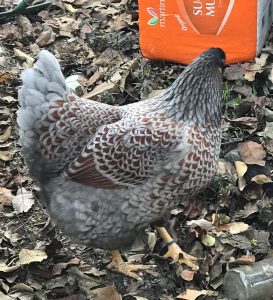
In conclusion, the lifespan of a chicken typically ranges from 5 to 10 years, influenced by factors such as breed, care, and living conditions. Heritage breeds often live longer, benefiting from robust genetics and attentive care. Commercial breeds may have shorter lifespans due to intensive egg production demands. Optimal nutrition, proper healthcare, safe housing, and stress-free environments are key to extending a chicken’s life. With ongoing advancements in poultry care and genetics, the potential for chickens to live longer, healthier lives is increasing. Understanding and addressing these factors are crucial for anyone looking to raise chickens, ensuring their well-being throughout their life cycle.
Average Lifespan: Chickens generally live between 5 to 10 years, varying significantly based on breed, care, and environment.
Breed Differences: Heritage breeds often have longer lifespans compared to commercial breeds, with the latter having shorter lives due to intensive production processes.
Care and Environment: Proper care, including optimal nutrition, adequate healthcare, and safe, stress-free living conditions, is crucial for extending a chicken’s life.
Health Issues and Prevention: Chickens face common health issues like respiratory infections and parasites, with prevention focusing on cleanliness, diet, and regular health checks.
Emotional Aspects: Chicken keepers often develop deep attachments to their birds, experiencing joy in their care and grief at their loss.
Community Support: Online and offline poultry communities provide valuable support and knowledge sharing for chicken enthusiasts.
Advancements in Care: Ongoing improvements in veterinary care, nutrition, and genetics research are enhancing the health and potential lifespan of chickens.
Future Prospects: With these advancements, there’s potential for chickens to live longer, healthier lives, highlighting the importance of continual learning and adaptation in poultry care.
Final thoughts on chicken lifespan
In reflecting on the lifespan of chickens, it’s clear that while genetics provide a baseline, the quality of care is paramount in determining their longevity. The attention we give to their diet, environment, and health can significantly extend their lives beyond the average expectancy. This understanding places a responsibility on chicken keepers to create a nurturing and safe environment. Additionally, as advancements in poultry care continue, we can expect to see even longer lifespans for these birds. Ultimately, the journey of raising chickens is not just about the time they are with us, but about the quality of life we provide, making every year they live a testament to the care and love they receive.
15. FAQs about How Long Do C hickens Live?
Good Space and Shelter and Clean Quarters for longevity.
-
What is the average lifespan of a chicken?
The average lifespan of a chicken is typically between 5 to 10 years. However, this can vary significantly depending on the breed, care, and living conditions.
2. Do different breeds of chickens have different lifespans?
Yes, different breeds have varying lifespans. Heritage breeds often live longer, sometimes over 10 years, while commercial breeds used for intensive egg production usually have shorter lifespans, around 5 to 6 years.
3. Can the lifespan of a chicken be extended?
With proper care, a chicken’s lifespan can be significantly prolonged. Ensuring a balanced diet, maintaining clean and secure living spaces, and conducting regular health check-ups are crucial for their longevity. It’s also essential to provide ample space for each chicken, as overcrowding can lead to stress and aggression among the flock. Furthermore, enriching their environment with opportunities for natural behaviors like foraging and dust bathing contributes to their mental well-being. Additionally, protecting them from predators and extreme weather conditions is vital in creating a safe and stress-free environment, further enhancing their quality of life and lifespan.
4. What are common health issues that affect a chicken’s lifespan?
Common health issues include respiratory infections, parasites, nutritional deficiencies, and age-related conditions like arthritis. Proper care and preventive measures can help manage these issues.
5. How Long Do C hickens Live: How does the environment affect a chicken’s lifespan?
The environment plays a significant role in a chicken’s lifespan. Factors like adequate space, protection from predators, cleanliness, and a stress-free environment contribute to longer and healthier lives for chickens.
Other Articles You May Enjoy:
Common Garden Plants Toxic to Chickens
5 Secrets To A Clean Chicken Coop
Power Herbs For Chickens – Unlocking Their Best Health
Peppermint The Ultimate Rodent Repellent
How Karl Hammer Feeds 600 chickens without grains














